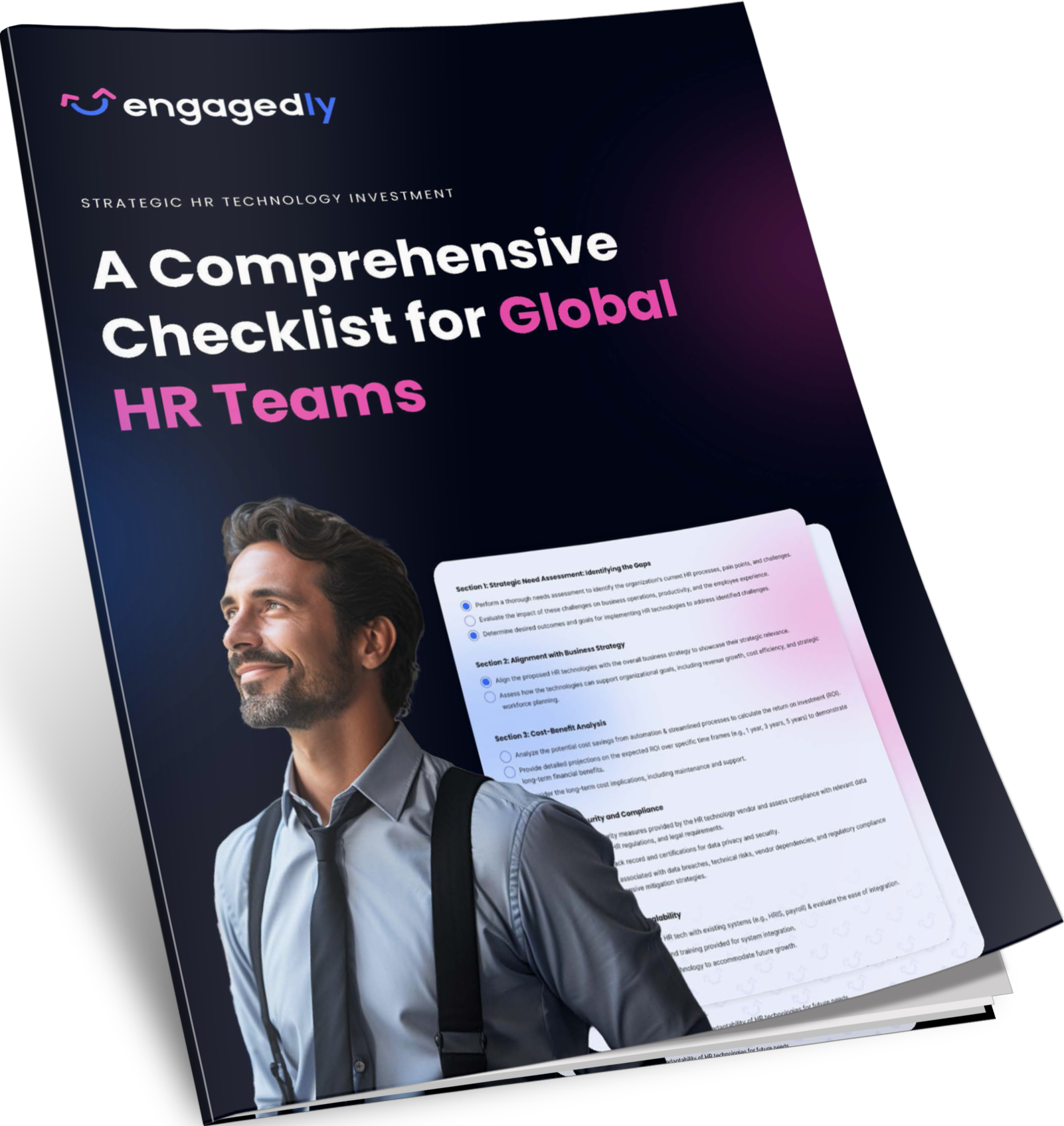Employee engagement has different meanings for different people. Some might say it means motivated employees, whereas others may insist that it refers to happy or satisfied employees.
What ideally does employee engagement mean?
Employee engagement focuses on employees’ commitment towards their work, aligned with the objectives and values of the company. Specifically, engaged employees show an interest in their work not only because they are being paid. Rather, they care about the company’s growth, as their development is linked to the company’s development.
This article focuses on why employee engagement is important; how it can be achieved, and its benefits.
Relationship between working environment and employee engagement
Employee engagement can be visibly noticed in a positive working environment wherein employees can perform efficiently and with freedom. According to studies, investing in such an environment leads to more engaged employees, which boosts organizational performance and profitability. For the same, it is necessary to identify the employee engagement objectives that support an employee’s overall growth.
A look at the purpose of employee engagement activities
Employee engagement activities are aimed at creating a motivated and engaged workforce. This may be accomplished by putting in place an employee-centric environment and employee engagement initiatives that will help your team.
Factors that would help foster employee engagement
The key to achieving employee engagement is to implement strategies that address the below key engagement areas:
- Aligning employees with the core values of the business
- Enhancing productivity
- Creating a better working environment
- Identifying employee behavior
- Encouraging employees to do their best
Techniques to encourage employees through employee engagement activities
Different techniques for getting employees involved in their day-to-day work are as follows:
A well-thought-out hiring approach
For a company to be successful, it must first recruit and retain motivated employees. Employee evaluation should not be solely on their skills, but personality and outlook should also be given consideration. In other words, employment monotony is not suitable for someone who needs variation in his job. This is where recruiting strategy comes into play, as it ensures that only those candidates whose experience and qualifications match the job description are hired.
Introduce employee-first workplace culture
In an employee-first workplace culture, employees feel their voice is heard and respected, and they feel comfortable sharing concerns. Thus, in an employee-first culture, every employee believes that he is free to be himself at work.
When you force people to mold their personalities to suit a rigidly defined company work model, you are restricting them from contributing their unique talents, perspectives, and new ideas to the table.
We all perform the best when we’re free to be ourselves, so don’t restrict your employees, or you’ll witness a slump in their motivation and engagement levels, along with a higher attrition rate.
This would result in unnecessary or extra expenditure due to constant hiring. Therefore, understand the importance of staff engagement and keep your best people on board, since it will be beneficial to your company.
Recognize your winners through performance culture
A performance-based culture refers to the best possible employee treatment at work so that the employee performs optimally, contributing to the company’s growth. Employees should never be promoted based on favoritism; rather, an empirical evaluation of job performance should take precedence.
Clearly outlining goals and objectives for employees is one important approach to achieve this. By making performance management as open and data-driven as possible, you can ensure that all employees take a lot of interest in their job and are accountable for meeting their targets.
The tie-up of OKRs and KPIs to data points instead of ambiguous criteria allows all employees to see who is doing well and why. This way, they will have a clear idea of the parameters of employee evaluation.
Involve Your Employees
If you understand why employee engagement is important, you would focus on providing opportunities to all employees. This way, they would feel like they’re a part of the team, and it would help them to take on more challenging work. Present the most pressing challenges in your organization and observe the steps taken to solve them. Consider involving your employees in planning ahead, assessing prospects, and improving company strategy.
Embrace Flexibility when it comes to working hours
Long hours in the workplace are no longer a sign of a dedicated, engaged worker. True involvement entails doing meaningful, intelligent work. An effective way to increase productivity is often to allow more freedom during the workweek. Which makes sense: 10 hours of 70 percent performance or eight hours of 100 percent performance?
Create a flexible work environment that promotes effective, focused work rather than useless busy work style. Flexible work hours, remote work, holiday entitlements, and sabbaticals are ways to provide flexibility to your employees.
Understand what flexibility means to your employees: it might vary from person to person.
Investment in regular training
Spend on your employees’ professional growth through training to create a team of empowered people who will enthusiastically put their newfound talents to the test.
Ensure that you have the right tools in place to make learning enjoyable and accessible. Consider deploying the latest training technologies to show your employees that you’re eager to invest in their ongoing learning and development.
Developing thorough training programs is important not just for keeping employees interested and involved in their jobs, but they also yield positive outcomes. According to a recent study, businesses that offer in-depth training programs earn a 24 percent higher profit margin and their per-employee income increases by 218 percent.
Although training and development programs require an initial investment, continuing to invest in an employee’s growth yields significant returns.
Open lines of communication
It is critical that you foster a working atmosphere in which employees feel free to share their views, strategies, and methods of working, without any fear of judgment or retaliation. It’s really bothersome to have an idea disregarded, without due evaluation or respect for its virtues. Hence, always encourage them to discuss their ideas and recommendations. These discussions will keep you informed about what’s going on at work. Thus, the importance of work engagement based on the values of open communication has a direct impact on productivity.
Constant feedback mechanism
In the Harvard Business Review, it was found that 57 percent of respondents preferred positive and productive feedback over praise and recognition (compared to 43 percent).
Put employee feedback on the top of your priority list. Think about how you can respond positively quickly to your employees’ ideas and views. Owing to this, employees’ feedback will not be restricted only to the appraisal period.
Encourage employees to express themselves when it comes to problem-solving. Create a secure environment where employees feel free to share feedback anonymously or non-anonymously. Use tools like pulse surveys and anonymous feedback platforms.
Appreciate personal achievements
Employees will be less engaged if they believe their employer does not recognize or appreciate their accomplishments.
This helps the team to consistently accomplish extraordinary feats and come up with brilliant ideas. Also, recognizing and celebrating employees’ accomplishments instill a collective sense of purpose in the team.
Competitive and timely payment process
Competitive salary and timely payment go a long way toward retaining the best employees and attracting potential talents.
Benefits of employee engagement
We have understood why employee engagement is important and techniques to build strong employee engagement. Now, let us explore some of the benefits of employee engagement.
Boosts productivity
It goes without saying that engaged employees mean higher efficiency. The reason being, engaged employees like their job and find it meaningful. A motivated employee will work harder, quicker, and with more enthusiasm. Employees who are satisfied are more productive than those who are dissatisfied. Evidently, a Gallup survey found that workplaces with a high level of engagement had a 41% reduction in absenteeism. Hence, an engaged employee will be less absent from work, which is a significant boost to production.
Retention of top performers
According to a Gallup poll conducted in 2017, 51% of employees want to quit their present employment. Lack of acknowledgment, internal office problems, and a lack of pay raise are some of the causes.
Employees come to work with a set of expectations and aspirations. And if you don’t supply them, they’ll start hunting for better alternatives. Retaining your best employees ensures that the company maintains a positive culture, and it also saves money. A study indicates that replacing an employee costs 33% of their annual income, not to mention the difficulty and discomfort of having to train a new recruit.
As a result, engaging employees, who generally tend to be happy with their work, lower the cost of turnover while also increasing retention.
Enhances company culture
Employees who are enthusiastic about their job are often easy to deal with. However, it’s not because they’re happier or more upbeat but they showcase a high-engagement workplace culture.
Engaged employees, in theory, live your organization’s core values every day at the workplace and are acknowledged and appreciated for it. Celebrating your most enthusiastic and valued employees is one step toward fostering an engagement culture.
Improved employer loyalty
Employers are more likely to stick around if you focus on the values and importance of staff engagement. This results in a high rate of employee retention and a low cost of employee turnover.
Employees who show low levels of engagement and disinterest in their work are likely to hop over to another job as when an opportunity strikes. Even if your employees aren’t seeking a new job, it doesn’t imply they won’t take a better offer. Employees will stick around longer if they care about their employment and the organization they work for.
Profitability
Increasing employee engagement will result in increased income. The findings of Aon’s 2018 global engagement report are intriguing, which indicates that every 5 point increase in engagement translates to a 3% rise in earning. When employees are enthusiastic about their work, they are more likely to go the extra mile to get a job done.
Thus, if you retain employees, it would increase productivity and boost sales. Consequently, it makes complete sense that your profits will rise significantly too.
All-in-all, it is essential to reinvest time and money into increasing employee engagement, as the long-term economic benefits are well worth it.
Happy employees turn brand advocates
When employees feel satisfied with their work, they show interest and enthusiasm in their workplace. They also exhibit a high level of engagement, which can be evident in their increased contribution to work. They relate with their performance and the company they work for. This results in their overall happiness with the job, which can be the best factor for company culture, productivity, etc.
Essentially, highly engaged employees become your brand advocates. That is, employees turn into the most trusted voice of your company. They knowingly or unknowingly promote your company through word-of-mouth marketing and social media posts, with an emphasis on the company’s goodness.
Conclusion
Employee engagement is crucial for organizations globally. It helps in improving employee productivity and benefits the organization in the long run. In this post-pandemic era, where most of the employees are still working from home, employee engagement should be a core part of business strategy.
Learn how Engagedly can help you improve employee engagement by requesting us for a demo.
Request A Demo
Kylee Stone
Kylee Stone supports the professional services team as a CX intern and psychology SME. She leverages her innate creativity with extensive background in psychology to support client experience and organizational functions. Kylee is completing her master’s degree in Industrial-Organizational psychology at the University of Missouri Science and Technology emphasizing in Applied workplace psychology and Statistical Methods.





